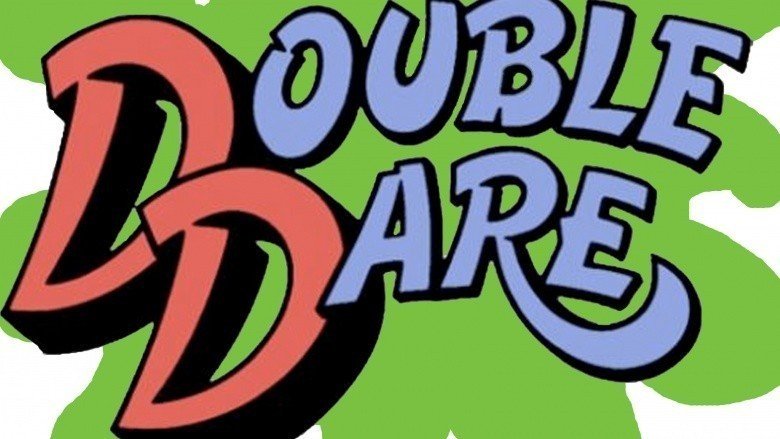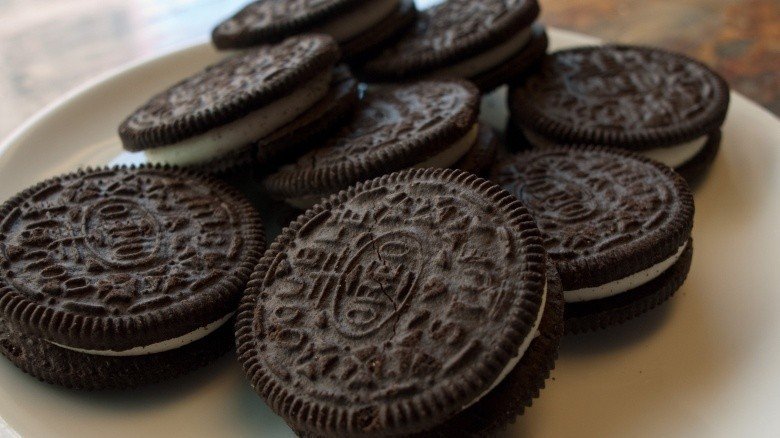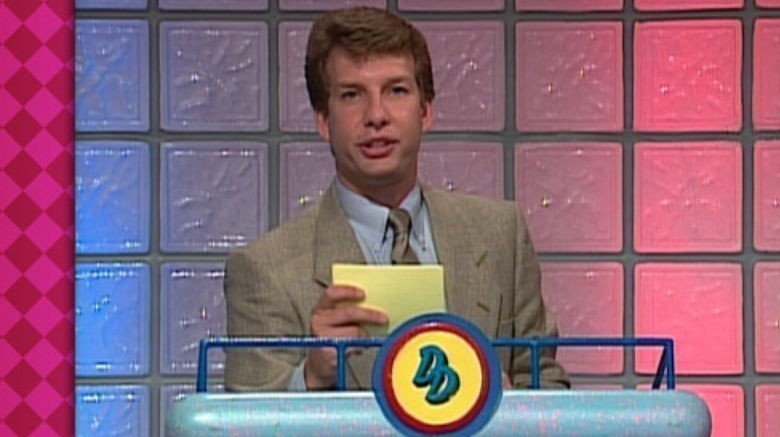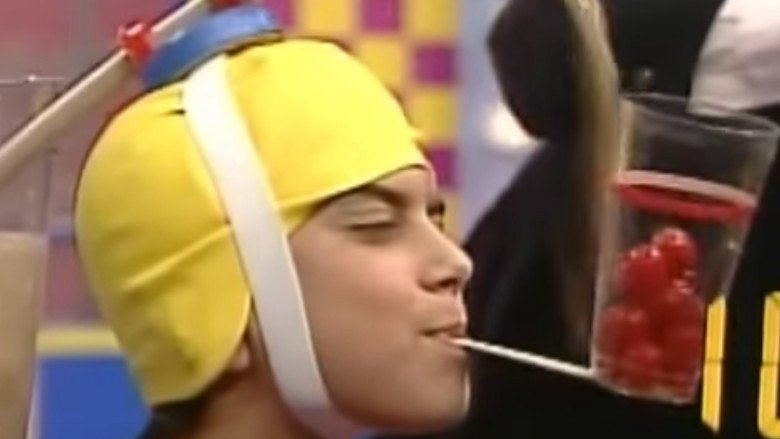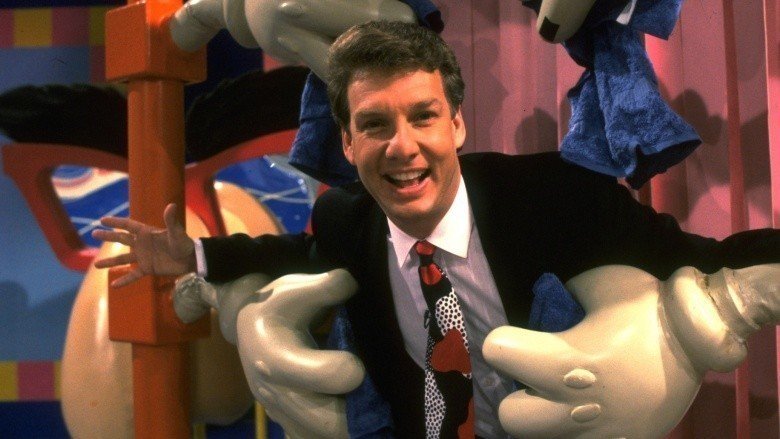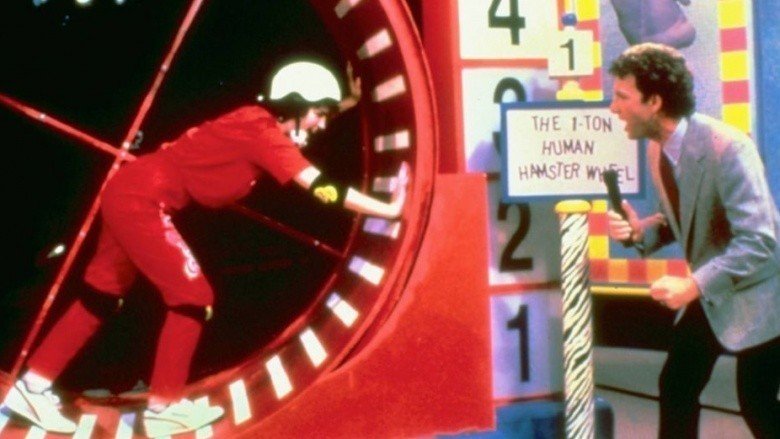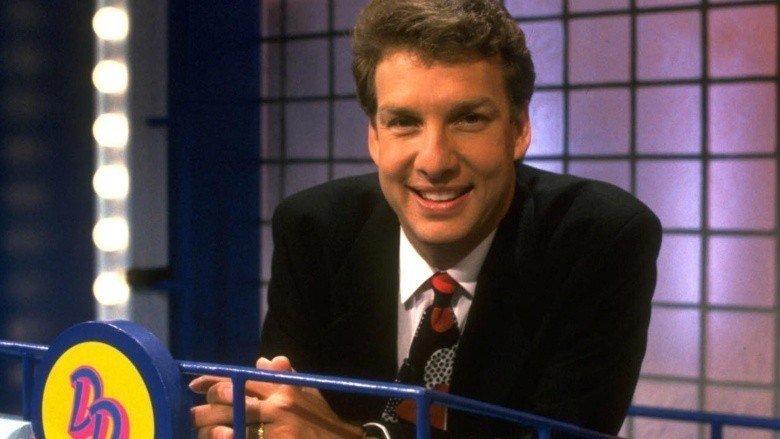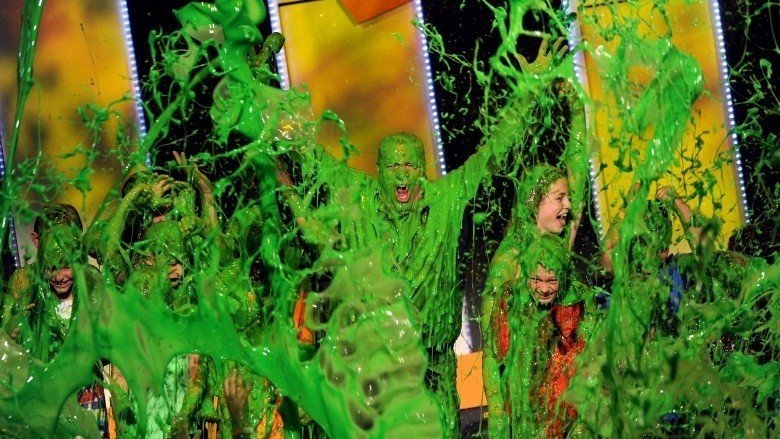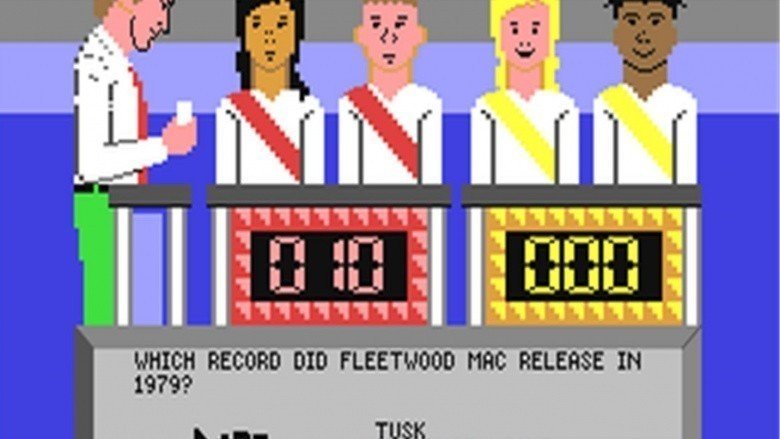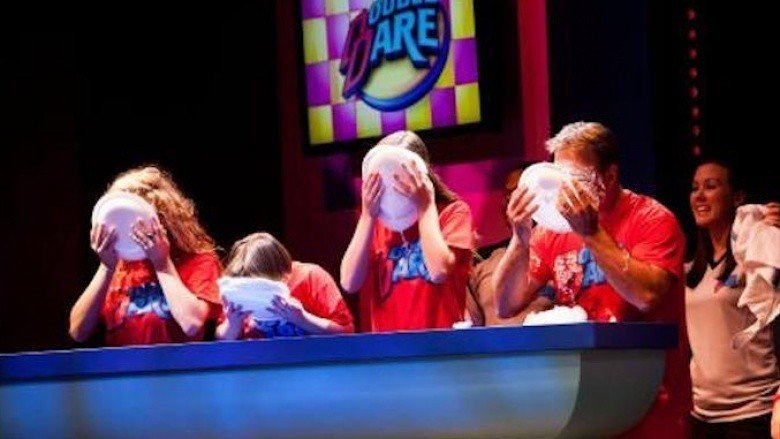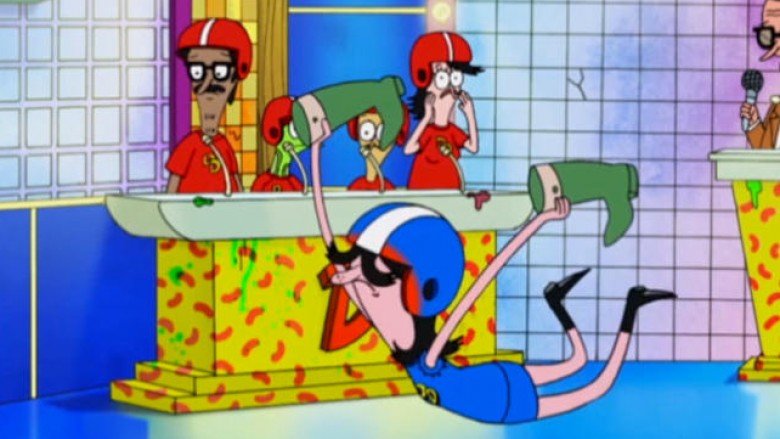The Untold Truth Of Double Dare
In the '80s and early '90s, young viewers all over the country desperately wanted to be on Double Dare. It was a kid's dream come true: a far cry from adults' stuffy game shows, Double Dare gave contestants money for answering questions about movies and TV shows...and then gave them the chance to compete in incredibly messy and sloppy carnival games to win a ten-speed bike or a microscope. Double Dare spawned an entire genre of kids' game shows, many of them also on Nickelodeon (including Finders Keepers, GUTS, Think Fast!, Get the Picture, and Fun House), but there's nothing quite like the original. We double dare you to read this article full of things you probably didn't know about the show—and you can't take the physical challenge.
It started as a way to sell cookies
In the mid-'80s, children's television was driven by merchandise: animated shows like Masters of the Universe and Transformers were designed to sell action figures and toys based on characters from the show. Nabisco wanted in on the kiddie TV action, but didn't think a cartoon would be a very effective way to sell cookies. What would work, according to executives? A live-action game show featuring kids interacting with Nabisco products in the form of messy stunts and games. A representative for the snack company approached Nickelodeon president Gerry Laybourne with the idea, and producers were assigned by the network to develop the show. Nabisco ultimately dropped out of the show and pulled its sponsorship long before Double Dare (which was almost titled Truth or Dare) premiered in 1986.
The show was equally influenced by a forgotten '70s TV show and a board game
Co-creators Geoffrey Darby and Bob Mittenthal had two big influences when they put Double Dare together. The first was the cheesy 1970s game show Battle of the Network Stars, in which actors from the three big networks faced off in sports challenges. (For example: Gabe Kaplan from Welcome Back, Kotter running the 100-yard dash, or Lynda Carter of Wonder Woman in a swim race against Adrienne Barbeau from Maude.) Mittenthal was especially fond of the show's obstacle course, which he said was "really cool and really visual and physical."
The other inspiration: the board game Mouse Trap. Darby said that he "always wanted to put a live kid through a Rube Goldberg machine." Mouse Trap involved setting up an elaborate series of outlandish plastic gadget parts just so for it to catch a mouse. It's an example of a Rude Goldberg machine—named after an early 20th century cartoonist who specialized in drawing images of extremely complex inventions that performed a simple task. And so the obstacle course from Battle of the Network Stars met the silly gadgets of Mouse Trap and Rube Goldberg...along with the directive to "make it messy."
Marc Summers was not the original choice for host
Marc Summers had "zero interest" in what he initially considered a silly children's TV show—he wanted to be a legitimate game show host, like Bob Barker (for whom he worked as a writer and "idea man" on Truth or Consequences in the 1970s). So he approached Double Dare like it was a game show for adults, gently making fun of the kids but never talking down to the young competitors. Summers ultimately beat out more than 1,000 other candidates for the hosting job, but the gig was actually offered to actor and comedian Dana Carvey...on the same day he was offered a spot in the cast of Saturday Night Live. He took SNL, and Summers got the call.
The first obstacle course was very different…and deeply flawed
When a TV show shoots its pilot episode, it's intended to not only showcase what the show will be like in the future, but to work out any heretofore unseen issues. Double Dare's 1986 pilot episode had quite a few kinks and problems. For example, the idea that both kids from the winning team should get to run through the final round's obstacle course somehow didn't occur to producers. They thought it would be fine for the duo to pick one kid to go through the obstacles, and hand off flags to their teammate, who would just stand there and hold on to the flags. As this was a situation that proved both boring and sad for the kids who wouldn't get to go up and down the "Sundae Slide," producers decided to implement a tag-team situation.
Even that was hard to get up and going. The first obstacle on the first day of shooting the first Double Dare episode was called "Nightmare," which proved to be quite fitting. It was basically a giant sack of feathers, and the contestant had to find the flag hidden inside to move on to the next obstacle. As the kid plowed into the pillow, feathers flew, making for good TV...but the poor kid couldn't find the flag. The entire 60 seconds allotted for the entire course were spent on "Feather Pillow," and even then the flag still wasn't found. As it turns out, the crew forgot to put the flag in. The contestants were allowed to re-do the course...and this time the flag was right at the top of the bag of feathers. However, the contestant didn't know that, so he started from the bottom up, and dumped it upside down...burying the flag. Again, the whole 60 seconds was spent trying and failing to find the flag. So they got to re-do it one more time—the flag was buried in the middle of the pillow this time, and located quickly.
The show was even messier than it looked on TV
Before the show's production was moved to Nickelodeon's facilities in Florida, Double Dare was taped at WHYY, a PBS station in Philadelphia. The surface of the floor where the super-sloppy show rolled was a little too smooth—it was made of poured epoxy, an incredibly slippery and somewhat toxic industrial coating. It was also really hard for the crew to clean it up between games and after episodes. That surface had to be mopped, not hosed, because no drains or nearby running water stations had been installed. (Whipped cream was especially hard to clean off.) There were even some casualties. During the first week of taping, a camera operator slipped during a rehearsal and fractured an ankle. Fortunately, the floor was soon coated in much more manageable linoleum, and troughs were placed at the front of the stage where all the game junk could be squeegeed off.
Marc Summers had OCD
Of all the TV hosting jobs Summers could've had, Double Dare might have been the most psychologically taxing. It often required Summers to be doused in slime, whipped cream, or worse—all while, unbeknownst to millions of viewers, he was coping with obsessive-compulsive disorder. He revealed his diagnosis in an interview with Oprah Winfrey in 1997, saying he had struggled with the overwhelming urge to clean and organize for years, but didn't know his condition had a name until he was hosting a talk show and he had to do a segment about OCD. However, Summers claimed he was able to keep his condition under wraps and under control while hosting Double Dare. "It didn't affect me. It didn't bother me. It was never an issue."
Some obstacles were more complicated (and expensive) than others
Byron Taylor was the show's art director, which meant he came up with dozens of the stunts and obstacle course impediments seen on Double Dare. (He was known around set as "The Glopmaster.") Among the projects he worked on was the show's iconic 1-Ton Human Hamster Wheel. It worked by having one contestant run inside it, which lowered an arm holding a flag that the contestant's teammate had to grab to complete the stunt. It had been suggested by one of the show's writers, who had worked on the classic stunt-based TV game show Beat the Clock, but it was up to Taylor to make it work. The biggest problem was that contestants "couldn't get any traction" while running on the wheel if the soles of their shoes were covered in glop from a previous obstacle. He added grip tape, similar to the no-slip strips used in bathtubs or showers, to the surface to make it easier. That was a cheap fix for the Hamster Wheel, which Taylor said cost thousands of dollars to make, eating up a lot of the obstacle course's production budget. He had to get creative to come up with inexpensive obstacle course obstacles to stretch the money: "It's cheap to have someone run through tires filled with cake mix."
One obstacle course entry was nearly impossible to beat
Pick-It was the consummate Double Dare obstacle: It was comically oversized (it was a giant nose), incredibly messy (it was full of fake snot), and super-gross (did we mention it was full of fake snot?). It was also incredibly difficult for contestants to master. Art director Byron Taylor says the material used to replicate the snot (mostly pudding) wound up being indistinguishable from the vinyl flag kids were supposed to find inside the nose.
Some games weren't good enough (or appropriate) for TV
The stunt designers came up with a lot of games, but many never made it past the planning stages. One listed in The Double Dare Game Book was "The Barber Chair," in which a contestant was supposed to use a lever underneath the chair to push themselves up into the air until they could reach the flag hanging on a pole, and win. But the chair kept getting stuck...meaning that if it was used on-air, the kid inside it might not have been able to get back down. The designers also tried multiple times to produce stunts, games, and obstacles that revolved around poop (because this was a show for children, and children think poop is hilarious). But Nickelodeon wouldn't let them do any games based on feces, or butts. (Or armpits.) So the designers would just convert a butt-based concept into a mouth-based one.
The slime used on the show was named after heroin
In the early '90s, Nickelodeon started selling toys based on some of its shows, including little cans of slime like the stuff used on Double Dare. The name of the slime, both on the show and on the packaging: Gak. That's also a slang term for heroin...and it was no accident. While working with the then-nameless slime one day, somebody on the crew nicknamed it Gak, and it became a naughty in-joke on set, comparing the slime on a kid's TV show with a hard street drug. Summers knew the connection, and he eventually started saying "Gak" on air. Nickelodeon's marketing department, however, had no idea, and cluelessly put Gak in toy stores.
It was heavily merchandised
In addition to Gak, the marketplace was bombarded with Double Dare stuff during the show's original run. Video game versions were available for personal computers and the Nintendo Entertainment System, and two home versions of the game were released, not to mention a line of videos, school supplies, jigsaw puzzles, lunch boxes, yo-yos, and T-shirts just like the ones worn by contestants on the show. But the show had its limits. Marc Summers says producers turned down "a million-dollar deal" for a Double Dare breakfast cereal. (Sorry kids, no green slime cereal for you.)
The show faced some legal troubles
With all those stunts and physical challenges, someone was bound to get hurt. And when people get hurt, people sue. One popular part of the family-oriented Double Dare spinoff Family Double Dare was throwing pies into the faces of parents. Summers liked to hit folks with pies pretty hard, and one time, he apparently got a little too rough because he later received a call from lawyers representing Viacom, Nickelodeon's parent company, letting him know they were being sued by one of his victims. She claimed the incident left her so distraught that she was no longer able to have sex. (The show taped on a Sunday, and Summers found out about the lawsuit three days later.) The woman received an out-of-court settlement for $25,000.
There was a celebrity version of the show
One would think the allure of seeing B-list celebrities embarrass themselves on television would be irresistible—and not just because they're stumped by the quiz questions. In 1987, Nickelodeon commissioned an ultimately unsold pilot for a spinoff called Celebrity Double Dare. It was just like original recipe Double Dare, with the questions, physical challenges, and obstacle course, except instead of regular kids, the contestants were teams of a famous person and a young adult. The celebrities in the pilot episode: Charles in Charge star Scott Baio and Hotel co-star Heidi Bohay. Marc Summers skipped this one, leaving hosting duties to former Olympic athlete Bruce Jenner, years before he transitioned to life as a woman and changed her name to Caitlyn. The prizes were also a little bit better than the Double Dare fare: a winner on Celebrity Double Dare could take home a 1988 Ford Mustang.
It was popular all over the world
While original episodes of Double Dare aired in numerous countries, Nickelodeon licensed out the format of the show to TV production companies in almost every corner of the world. There have been Australian and British remakes, as well as local versions in Germany (DD Show), India (Duma Dum), France (Double Dare!), and French Canada (Double Défi), to name a few. In Brazil, the local version of Double Dare, Passa ou Repassa, ran until 2000, with a successful revival in 2013 still going strong.
The show was re-created in great detail for Sanjay and Craig
In 2013, Nickelodeon's biggest hit of the '80s met one of the channel's biggest present-day hits. On an episode of the animated series Sanjay and Craig, (about a boy, Sanjay, and his super-cool talking pet snake, Craig) Sanjay, Craig, and Craig's parents vie with another family for the only vacant trailer in a trailer park motel. And they do it by competing in an actual round of Double Dare on the actual Double Dare set (lovingly rendered in crisp animation). The set and games had been in storage for decades...as were host Marc Summers and announcer Harvey (who voiced themselves).
